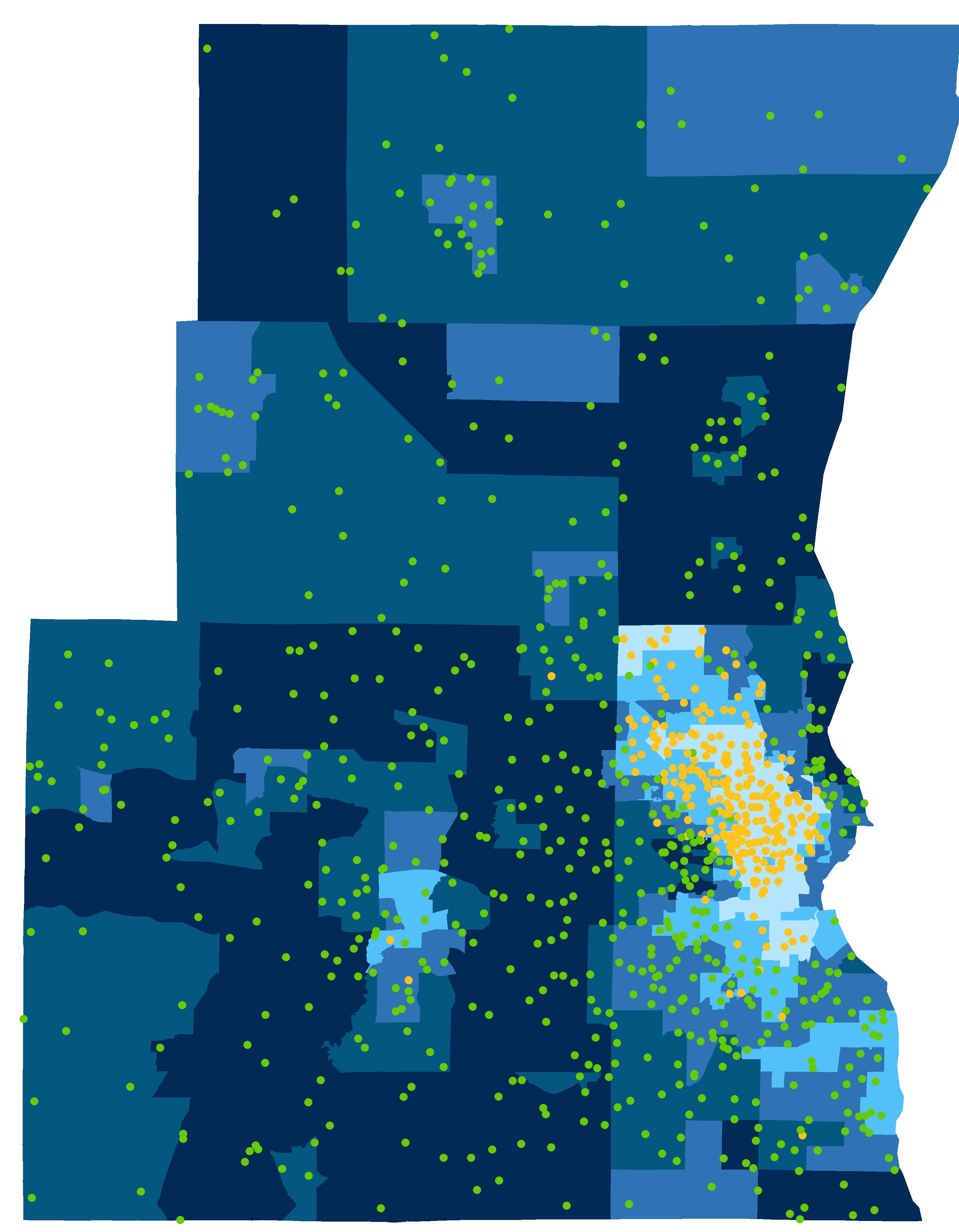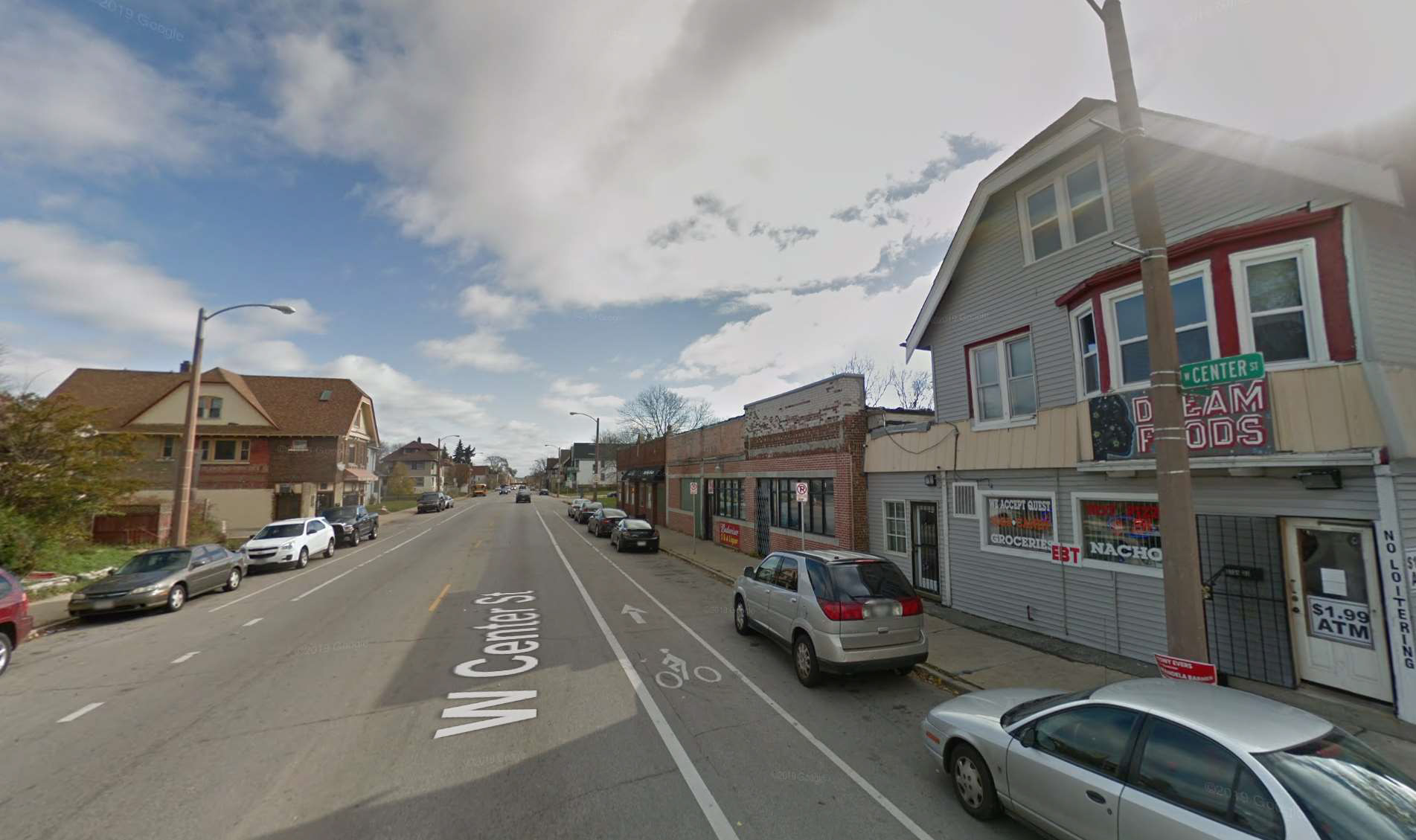Across the U.S., black and white children are growing up in neighborhoods with vastly different conditions. Black children are 7.6 times more likely to live in very low-opportunity neighborhoods than white children. Here’s what that looks like in Milwaukee, where 58% of black children live in very low-opportunity neighborhoods. The map on the left shows the areas of Milwaukee where black children—shown as yellow dots—live. Green dots indicate where white children live.
Educational opportunity
Attending quality schools is critical to educational attainment and influences a child’s sense of what she is capable of achieving.
- A typical black child in Milwaukee is growing up in a neighborhood with a Child Opportunity Score of 6. In this neighborhood, she attends schools where only 54% of ninth graders graduate on time. This may instill in her low expectations about her own graduation prospects and discourage her from applying herself in school.
- In sharp contrast, a typical white child in Milwaukee is growing up in a neighborhood with a score of 85. She attends schools where 88% of ninth graders graduate on time. This clearly signals to her that educational achievement is the norm.
Secure housing and economic vulnerability
The neighborhoods of black and white children are very different in other ways too.
- The typical black child lives in a neighborhood where only 28% of families own their home.
- In the neighborhood of the typical white child, like the one shown on the left, 70% of families do.
This means that the typical black child experiences a community where wealth is low, and, therefore, economic vulnerability among neighbors is high. On the other hand, the typical white child is growing up in a community where economic security is the standard.
Access to health insurance
Other forms of community vulnerability are also very different.
- In the neighborhood of the typical black child, 16% of people lack health insurance.
- That number is starkly lower in the neighborhood of the typical white child, where only 4% of people lack health insurance.
Having health insurance protects families both health wise, by giving them access to timely medical care, and economically, by lowering their risk of unexpected health care expenses.





